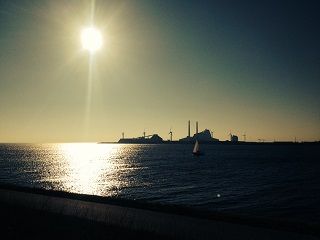From Guest Blogger Micaela: Onshore Wind Leading the way Towards Denmark’s 2050 Renewable Target

Despite the country has modest wind resources compared to other countries, it manages to capture the power of the wind with remarkable success. A key factor for the success is the early adoption of wind energy. Denmark has invested on wind energy since the 1970s. As a result, Denmark has had the chance to learn from experience. As a consequence of this experience and constant investment and innovative thinking, the wind industry has developed, technology costs have fallen and Denmark has built core competencies in the production and installation of wind turbines.
Present state of wind energy in Denmark
Denmark is one of the nations working really hard to discover sustainable energy solutions and it seems to be on the right track. The country has set the ambitious goal to be fossil fuel independent by the end of 2050. It also sees wind energy to be the main contributor, and the government has set a 50 percent target for wind energy from the total electricity consumption. Although the target may seem too bold, they are going in the right direction.
In 2013, wind power accounted for 31 percent of the whole electricity consumption of Denmark. According to a report by the power grid operator Energinet, in the first half of 2014, it was up to 41.2 percent. The report points out that the growth is partly due to more wind than usual, but also due to the increase in wind energy capacity in 2013. This is a record not only for Denmark but also a world record, since no other country has bigger wind power capacity in ratio to electricity consumption.
Energinet also said that despite the high share of wind energy, they did not experience any difficulties in balancing the supply and demand. Danmark’s grid is pretty flexible because of the conventional power plants and the grid connections with Germany, Sweden and Norway. Nevertheless, balancing the grid may become a challenge if some of the conventional power plants are shut down.
Reaching the 2050 Goal
A report released by the Danish Energy Agency, says that it is technically possible to build an energy system from renewable energy sources. It points out the cost of the fossil-free energy system. Depending on the choice of renewable sources of energy, the additional costs will be from 6 to 29 billion danish kroner by 2050. This is roughly 1,000 to 5,000DKK per person for the whole period, which would mean 30 to 150DKK per person per year.
According to an analysis made by the government’s energy agency, onshore wind is the cheapest source for generating electricity, even cheaper than coal. The analysis indicates that wind farms which are supposed to be operational in 2016, will cost 30 øre/ kWh. Nevertheless, the analysis does not include full assessment of the cost-benefit of the different technologies, and does not include taxes, subsidies and environmental benefits.
Wind energy is now the cheapest form of energy in Denmark, due to the commitment in wind energy from researchers, companies and politicians. According to Lars Aagaard, CEO of the National Energy Association, the challenge now is to find a way to harness wind energy so that there is a balance between supply and demand all the time. He also points out that improvements should be made in controlling the consumption and storing the generated electricity from the wind turbines.
Denmark is already analysing the option of using electric cars for storing the excess electricity and also in the form of heat, which later can be used to heat homes and businesses. Besides investing in renewable technology, the Danish government is also investing heavily in increasing energy efficiency. It also offers subsidies and incentives to companies who use renewable energy and improve energy efficiency. These strategies seem to be successful since the Danish economy has grown nearly 80 percent since 1980, and the energy consumption has barely increased.
The Danish government is constantly making investments in order to reach its 2050 renewable energy goal. Its strategy and incentives seem to spur creativity, which leads to savings and reduces costs of technology, especially in the onshore wind industry.
